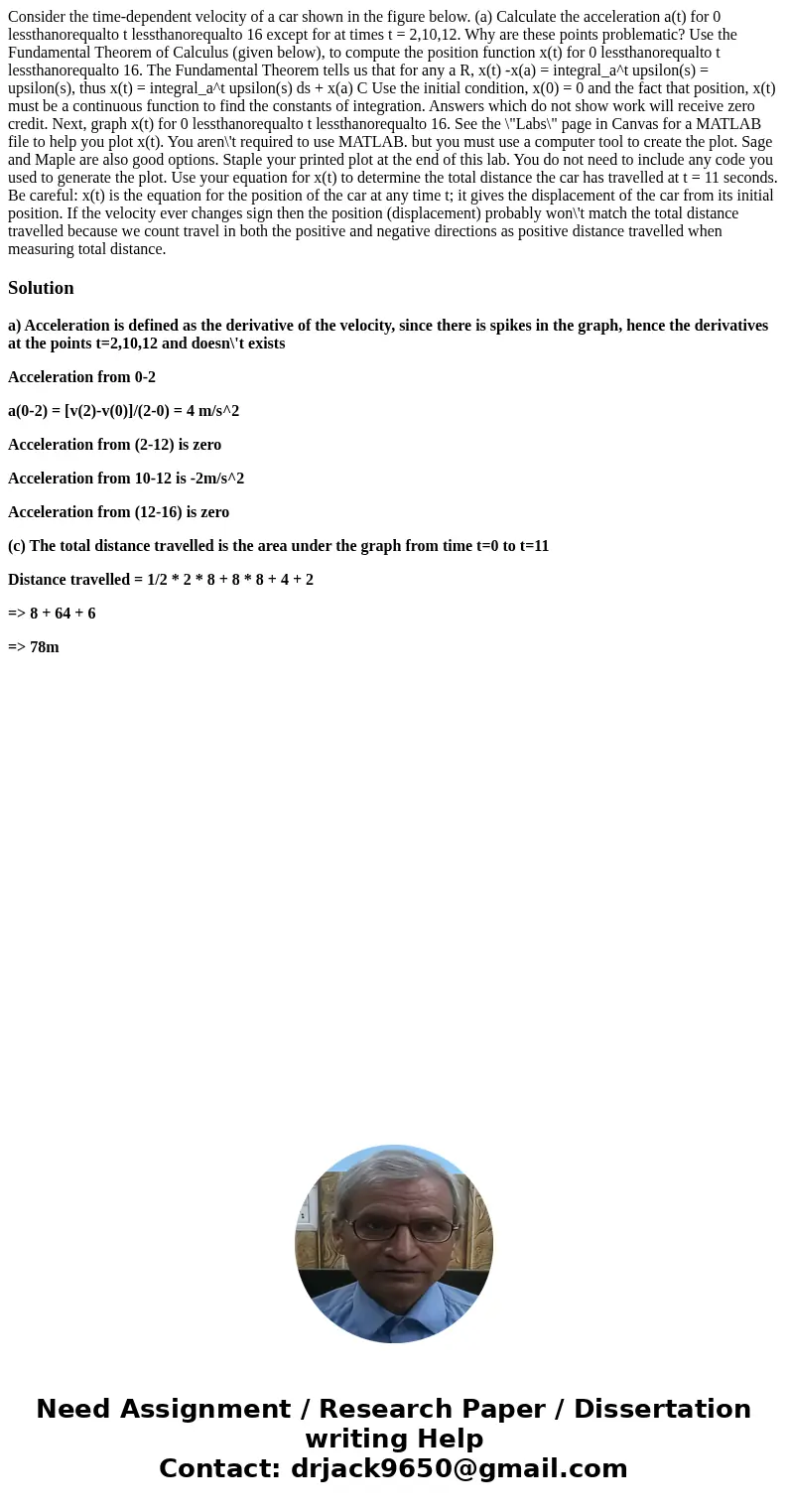Consider the timedependent velocity of a car shown in the fi
Consider the time-dependent velocity of a car shown in the figure below. (a) Calculate the acceleration a(t) for 0 lessthanorequalto t lessthanorequalto 16 except for at times t = 2,10,12. Why are these points problematic? Use the Fundamental Theorem of Calculus (given below), to compute the position function x(t) for 0 lessthanorequalto t lessthanorequalto 16. The Fundamental Theorem tells us that for any a R, x(t) -x(a) = integral_a^t upsilon(s) = upsilon(s), thus x(t) = integral_a^t upsilon(s) ds + x(a) C Use the initial condition, x(0) = 0 and the fact that position, x(t) must be a continuous function to find the constants of integration. Answers which do not show work will receive zero credit. Next, graph x(t) for 0 lessthanorequalto t lessthanorequalto 16. See the \"Labs\" page in Canvas for a MATLAB file to help you plot x(t). You aren\'t required to use MATLAB. but you must use a computer tool to create the plot. Sage and Maple are also good options. Staple your printed plot at the end of this lab. You do not need to include any code you used to generate the plot. Use your equation for x(t) to determine the total distance the car has travelled at t = 11 seconds. Be careful: x(t) is the equation for the position of the car at any time t; it gives the displacement of the car from its initial position. If the velocity ever changes sign then the position (displacement) probably won\'t match the total distance travelled because we count travel in both the positive and negative directions as positive distance travelled when measuring total distance.
Solution
a) Acceleration is defined as the derivative of the velocity, since there is spikes in the graph, hence the derivatives at the points t=2,10,12 and doesn\'t exists
Acceleration from 0-2
a(0-2) = [v(2)-v(0)]/(2-0) = 4 m/s^2
Acceleration from (2-12) is zero
Acceleration from 10-12 is -2m/s^2
Acceleration from (12-16) is zero
(c) The total distance travelled is the area under the graph from time t=0 to t=11
Distance travelled = 1/2 * 2 * 8 + 8 * 8 + 4 + 2
=> 8 + 64 + 6
=> 78m

 Homework Sourse
Homework Sourse